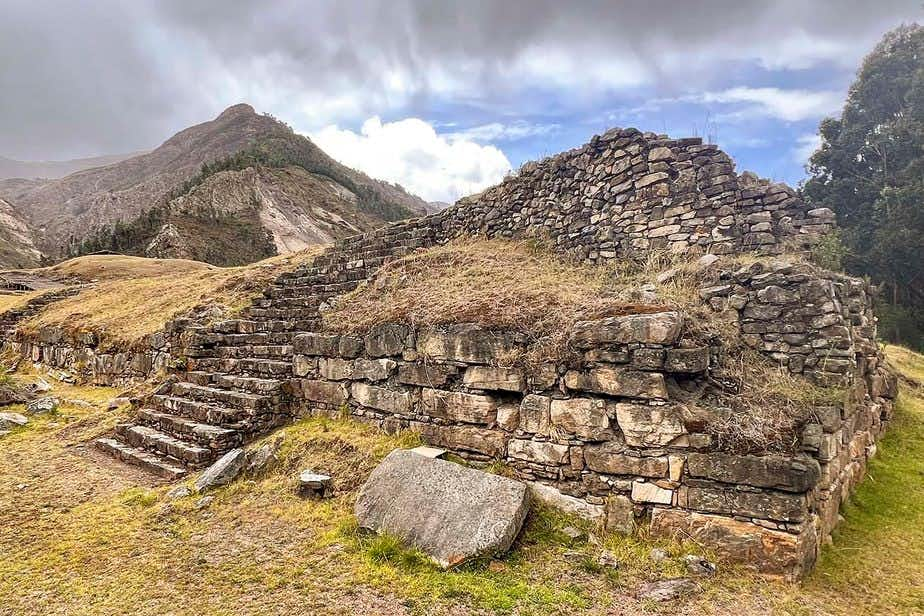Login
No account yet?
Create Account
Chavín de Huántar
Unique Pre-Inca Temples in the Andes Mountains
0 travellers have this on their Bucket List
0 been here
Chavín de Huántar is a series of unique ruins in Peru. It is located in the Andes Mountains at an altitude of 3,177 meters. The ruins are tucked between two mountain ranges in the region of the popular city of Huaraz. The most important building of Chavín, as it is often called, is the main temple. This is still in remarkably good condition and was built around 900 BC. You can easily visit Chavín on a day trip, which is very worthwhile. These are the attractions of Chavin de Huantar.
When I visited the location I was very impressed. The construction of the walls in particular reminds me of the Incas. Only they are much older. Chavin is pre-Inca, many hundreds of years before. The people who made this are called the Chavín culture.
These people flourished between 1,200 and 800 BC. According to archaeologists, they were non-violent people who were mainly concerned with cultural development. Archaeologists think that shamans played an important role. Or was it mainly a ceremonial place? There are countless questions that archaeologists have not yet been able to answer.
Moving the River
Chavín is located in a specially chosen place where two rivers meet. These are the Rio Monsa and the Rio Wacheqsa. According to scholars, these people even moved a river to build the temple. The location is particularly striking at the Circular Plaza, where there used to be a small village. In 1985, Chavín was declared a UNESCO World Heritage Site. Experts believe that about 85 percent of the archaeological remains remain undiscovered. And that Chavín was much bigger in its heyday.
The Remarkable Stones of the Temple
It is remarkable how the stones are so well worked. This was done without any metal tools. They mainly used quartz and obsidian to cut into the stones. Which happened with great precision. Something that can still be seen in various places today. is. The stones were extracted from the region and transported to the temple site. Although it is not entirely clear how that happened.
Stelae and Underground Passages
Walking around you will see various (copies of) stelae. These are pillars with texts or images. You can also see several in the underground passages, which you can explore yourself. Although it is not entirely clear what these perfectly crafted stones were used for. I think it gives something magical to this place.
Chavin National Museum
Chavin National Museum is actually a must-visit. The museum is only a few hundred meters away. You can visit it with the entrance ticket to the ruins. In the museum, you can see many original statues, unique characteristic heads and much more that were discovered during excavations. It is a national museum because you can also see works of art from other cultures from that time. You will see the similarities with the other cultures from the region. I found it intriguing.
History of Chavín de Huántar
Peruvian archaeologist Julio C. Tello discovered the ruins in 1919. By then it had disappeared under the sand. The excavation immediately received a lot of attention. This is mainly due to the temple, which consists of several platforms, terraces and underground passages. These are connected by stairs. And you can still visit most of them today, which makes it extra special. The official name is Monumento Arqueológico de Chavín de Huántar, although most people simply call it Chavín.
Visit Chavín
The excavation is located between two mountain ranges: the Cordillera Negra and the Cordillera Blanca. Most visitors get here via a day trip from the city of Huaraz. Where they visit several places in the mountains as well as the ruins. Ask on site for the possibilities.
0 travellers have this on their Bucket List
0 been here


